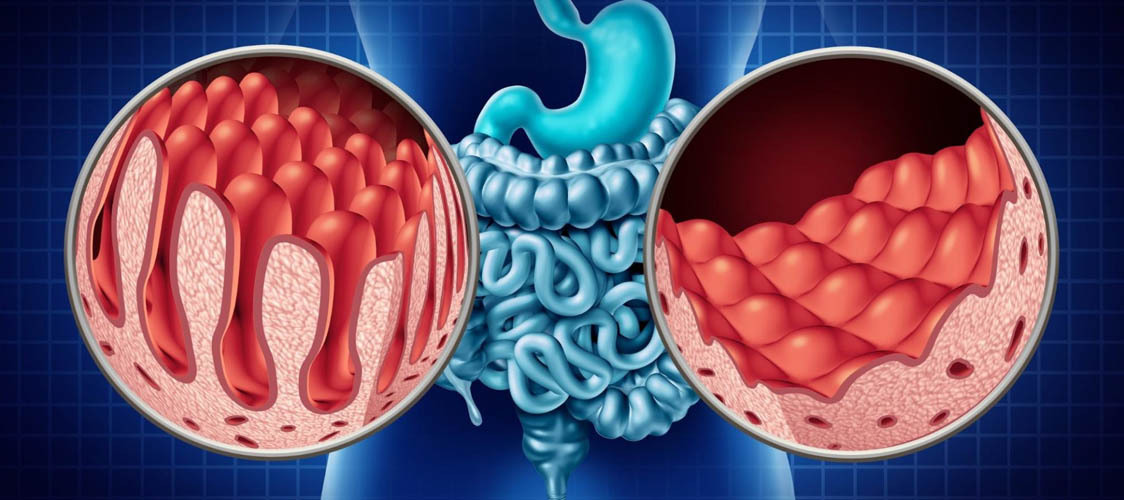


Do you often feel bloated, tired, or sick after eating? If yes, you might be experiencing something more serious than just a sensitive stomach. It could be celiac disease.
Celiac disease is a condition that affects how your body reacts to gluten. In this blog, we’ll explain what celiac disease is, the symptoms to watch out for, and how it can be treated.
Celiac disease is an autoimmune disorder. This means your immune system attacks your own body by mistake. When someone with celiac disease eats gluten, their immune system harms the small intestine.
Gluten is a protein found in wheat, barley, and rye. It is used in many everyday foods like bread, pasta, cereals, and baked goods.
When the small intestine gets damaged, the body cannot absorb nutrients properly. This can lead to serious health issues such as weight loss, fatigue, weak bones, and more.
Celiac disease is not the same as a food allergy or simple gluten sensitivity. It is a lifelong condition and must be taken seriously.
Doctors don’t know exactly why some people develop celiac disease. However, research shows that genetics play a big role. If you have a close family member, like a parent or sibling, with the condition, your chances of developing it are higher.
Celiac disease can begin at any age. Some people are diagnosed in childhood, while others may not notice symptoms until adulthood. It can be triggered after events like surgery, childbirth, pregnancy, a viral infection, or severe stress. Once triggered, the body begins reacting to gluten in harmful ways.
Celiac disease doesn’t look the same in everyone. Some people have very clear digestive problems. Others may have symptoms that don’t seem related to food at all. This can make the condition harder to spot.
One of the most common signs is ongoing stomach pain. People often feel bloated, gassy, or have frequent diarrhea. Others might suffer from constipation or have stools that are pale, greasy, or foul-smelling. These are signs that the body is not absorbing nutrients properly.
Fatigue is another common symptom. Even after a full night’s sleep, people with celiac disease often feel tired. This tiredness can be caused by poor nutrient absorption, low iron levels, or inflammation in the gut.
Unexplained weight loss, even while eating normally, can also be a warning sign. So can frequent headaches, joint pain, or numbness in the hands and feet.
Unexplained weight loss, even while eating normally, can also be a warning sign. So can frequent headaches, joint pain, or numbness in the hands and feet.
Some people with celiac disease develop a skin rash called dermatitis herpetiformis. It causes itchy, red, blistering skin, often on the elbows, knees, and buttocks. Even though it appears on the skin, this rash is directly linked to gluten sensitivity inside the body.
If you think you may have celiac disease, don’t stop eating gluten before seeing a doctor. It’s important to keep gluten in your diet during testing. Otherwise, the results may not be accurate.
The first step in diagnosis is usually a blood test. This test checks for specific antibodies that are often high in people with celiac disease. If your blood test comes back positive, the next step is often an endoscopy.
During an endoscopy, a small tube with a camera is passed through your mouth and into your small intestine. A tiny sample of tissue is taken to check for damage. This test helps confirm the diagnosis.
In some cases, genetic testing may be done to look for certain genes that increase the risk of celiac disease. These tests alone cannot diagnose the condition, but they can support the other findings.
Right now, there is no cure for celiac disease. The only proven treatment is a strict, lifelong gluten-free diet. This means avoiding all foods and products that contain wheat, barley, or rye.
Once gluten is removed from the diet, the small intestine begins to heal. Many people start to feel better in just a few weeks, although full recovery may take several months or longer. In children, healing often happens faster than in adults.
Eating gluten-free is not as simple as avoiding bread and pasta. Gluten can be found in sauces, soups, salad dressings, and even in medications and vitamins. It is important to read ingredient labels carefully. When eating out, always ask about how the food is prepared to avoid cross-contact with gluten.
Some people with celiac disease may also need vitamin or mineral supplements. These may include iron, calcium, vitamin D, or vitamin B12, depending on the person’s needs. A doctor or dietitian can help you decide what is best.
Celiac disease changes how you live and eat, but it does not have to control your life. With some planning and support, you can stay healthy and active.
Start by learning how to shop smart. Read labels carefully, cook more meals at home, and use gluten-free recipes. Keep your kitchen clean and avoid using the same toaster or utensils for gluten and gluten-free foods.
Remember, even small amounts of gluten can cause damage, even if you don’t feel symptoms right away. Staying 100% gluten-free is the best way to protect your health.
Celiac disease can be challenging, but it is manageable. Knowing what it is and how it works is the first step. If you suspect you have celiac disease, speak with your doctor. Getting diagnosed early can prevent future problems and help you feel better sooner.
With the right diet and care, most people with celiac disease can live full and healthy lives. It might feel like a big change at first, but with support and good information, you can thrive without gluten.
Are you ready to change your life? Book now to get started
Book Now